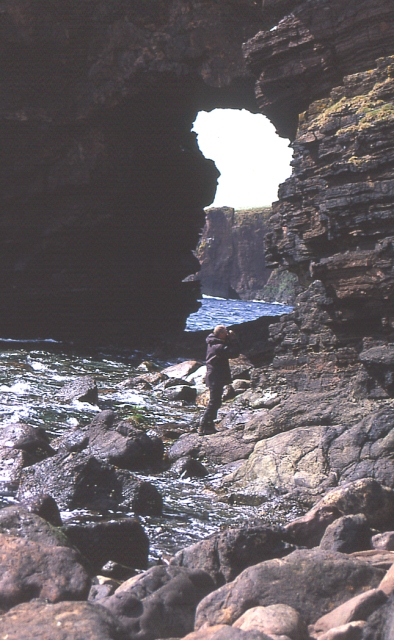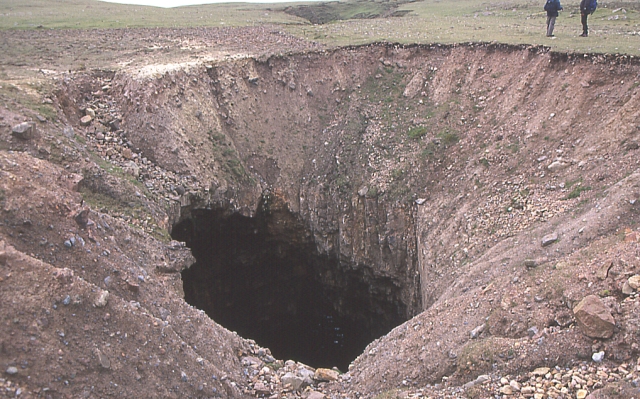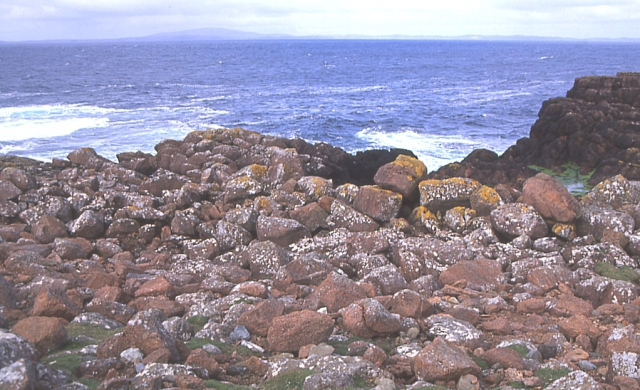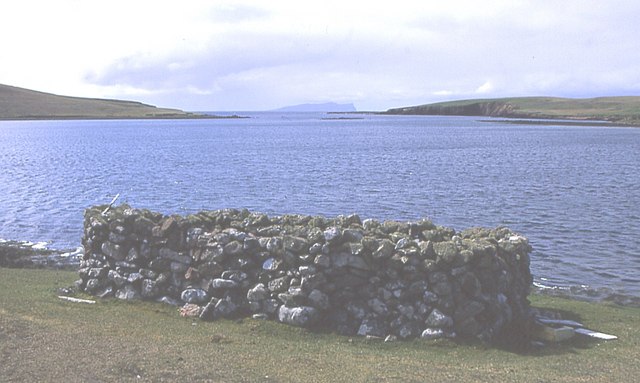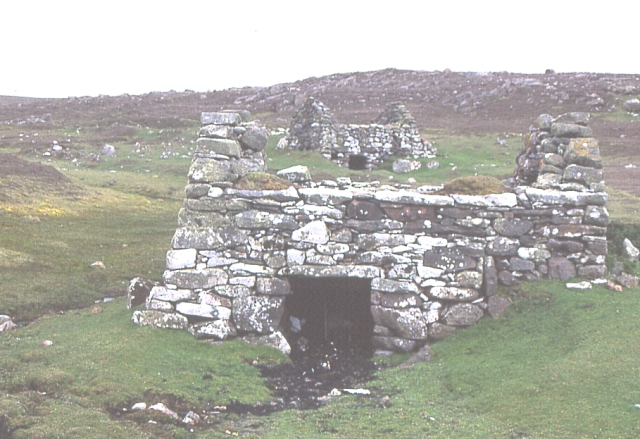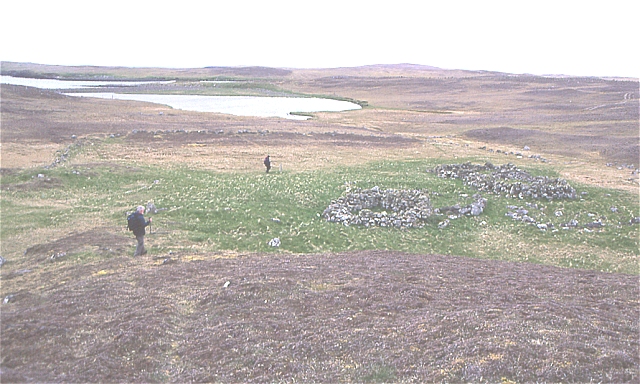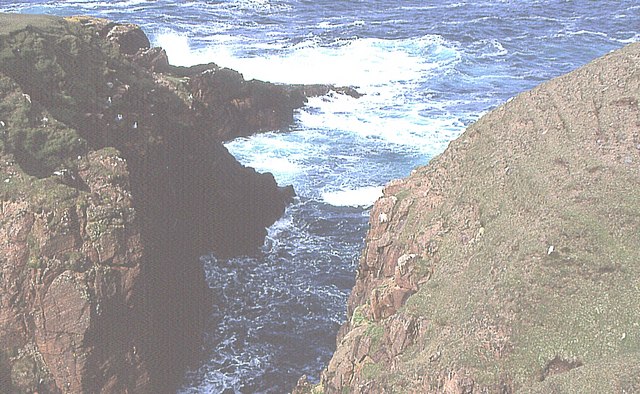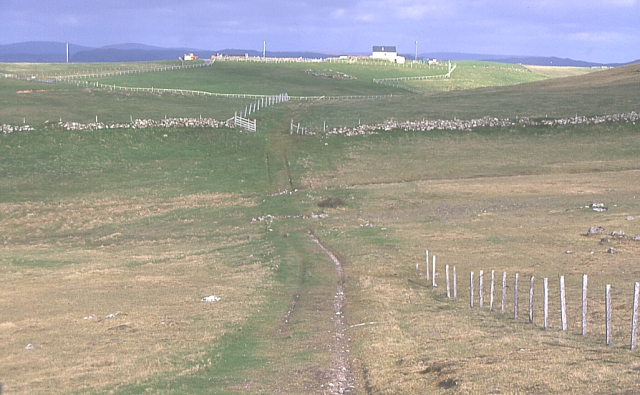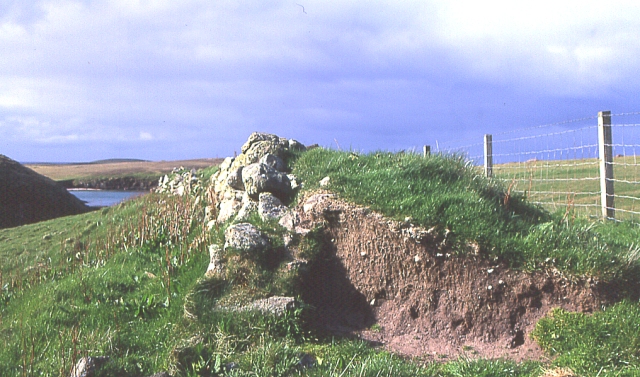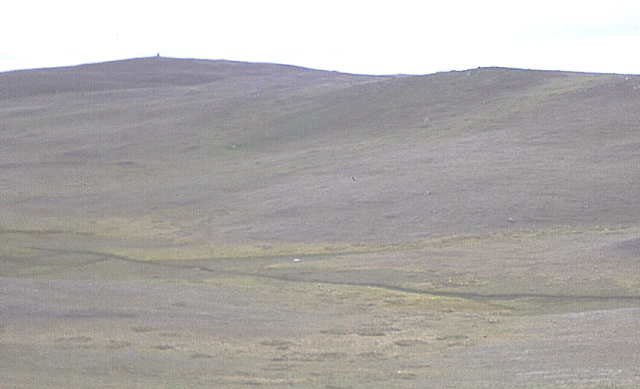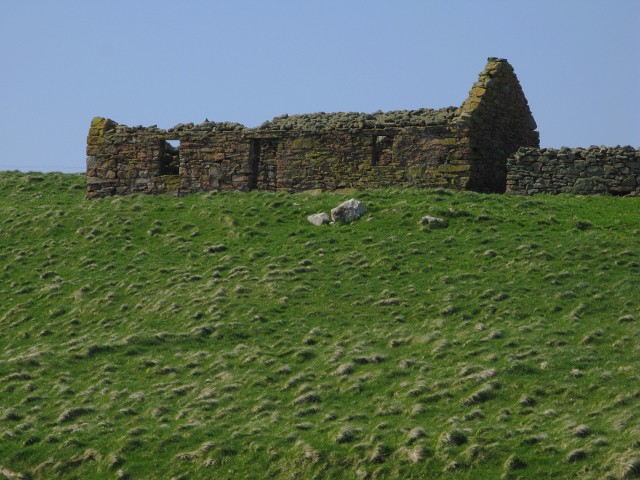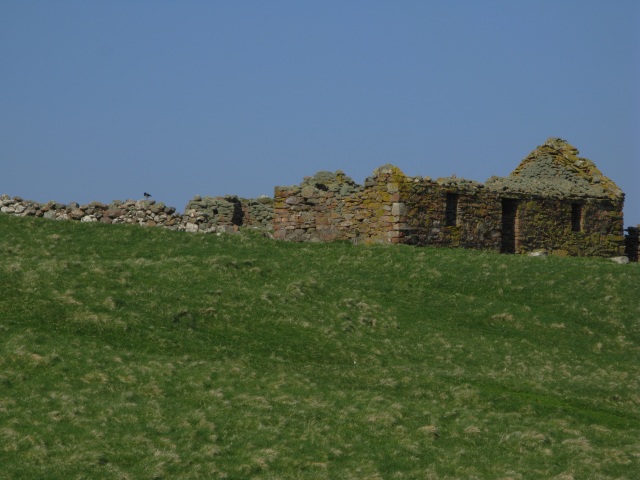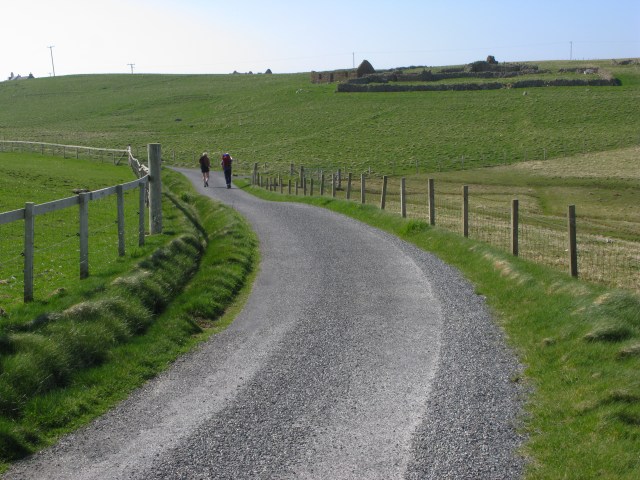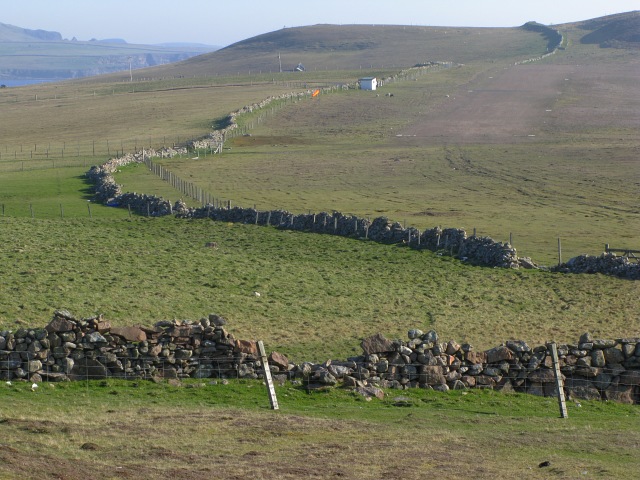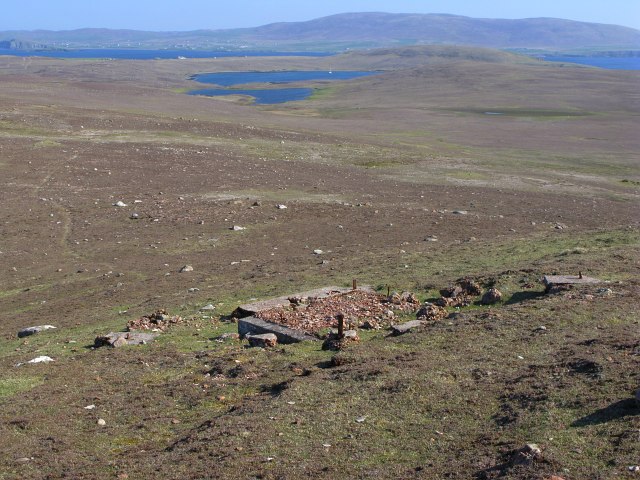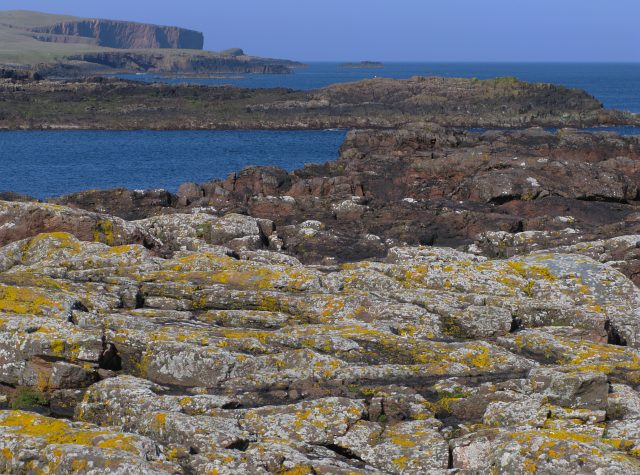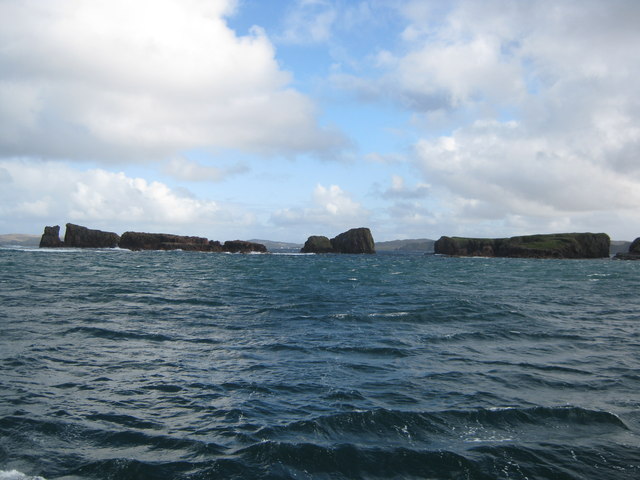Tarri Geo
Coastal Feature, Headland, Point in Shetland
Scotland
Tarri Geo
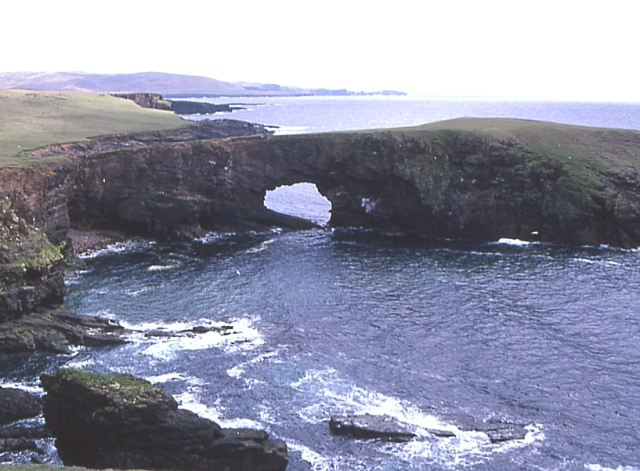
Tarri Geo is a prominent coastal feature located in the Shetland Islands, Scotland. It is a stunning headland that extends into the North Sea, forming a distinct point along the rugged coastline. Tarri Geo is situated on the west coast of the mainland of Shetland, near the village of Walls.
This headland is characterized by its towering cliffs, which rise dramatically from the sea. The cliffs are composed of rugged rock formations, showcasing various layers of sedimentary deposits, including sandstone and conglomerate. These formations offer a glimpse into the geological history of the region, with evidence of ancient landforms and geological processes.
Tarri Geo also serves as an important habitat for various seabird species, including puffins, guillemots, and fulmars. These birds nest on the cliff ledges, taking advantage of the inaccessible and protected environment. The surrounding waters are rich in marine life, attracting seals, dolphins, and occasionally even whales.
The headland offers breathtaking panoramic views of the North Sea, with its deep blue waters contrasting against the rugged landscape. Visitors to Tarri Geo can immerse themselves in the natural beauty of the area, exploring the coastal trails and cliff-top paths. The site is popular among hikers and nature enthusiasts who are drawn to its stunning vistas and abundant wildlife.
Overall, Tarri Geo is a remarkable coastal feature in Shetland, showcasing the power of nature and offering a unique glimpse into the geological and ecological diversity of the area.
If you have any feedback on the listing, please let us know in the comments section below.
Tarri Geo Images
Images are sourced within 2km of 60.341808/-1.7040247 or Grid Reference HU1662. Thanks to Geograph Open Source API. All images are credited.
Tarri Geo is located at Grid Ref: HU1662 (Lat: 60.341808, Lng: -1.7040247)
Unitary Authority: Shetland Islands
Police Authority: Highlands and Islands
What 3 Words
///grinders.trying.dreamer. Near Walls, Shetland Islands
Nearby Locations
Related Wikis
Papa Stour
Papa Stour is one of the Shetland Islands in Scotland, with a population of under fifteen people, some of whom immigrated after an appeal for residents...
Biggings
Biggings is a village on the island of Papa Stour, in Shetland, Scotland. Papa Stour's church is situated at the south of Biggings. A homestead of Duke...
Papa Stour Airstrip
Papa Stour Airstrip is a small airstrip in the village of Biggings on the island of Papa Stour. Shetland, Scotland. == History == Papa Stour Airstrip opened...
Maiden Stack
The Maiden Stack or Frau Stack is a tiny stack in the western Shetland Islands to the north of Brei Holm and east of Housa Voe about 140 metres (150 yd...
Have you been to Tarri Geo?
Leave your review of Tarri Geo below (or comments, questions and feedback).
